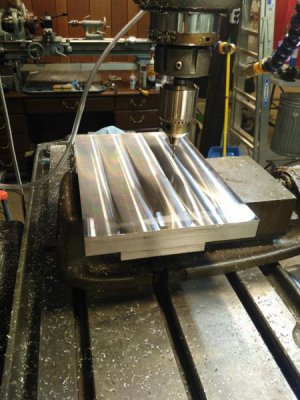- Joined
- Feb 8, 2014
- Messages
- 11,176
Jake, this is the first time I've see a picture of your machine. It looks like it wouldn't take much mechanically to put hand wheels on it. You just need to move the monitor, mouse, and keyboard to a position so they are comfortable to use when standing in front of the machine. My keyboard and mouse move with the table. The DRO works when the machine is E-Stopped. At least you would have X & Y manual. A little software mod would allow you to turn off the X & Y programmatically and keep the quill under jog control. We could make that almost a full manual/CNC machine.



